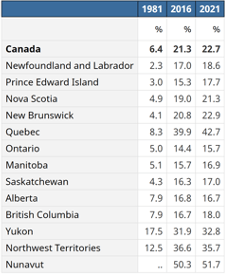Estate Planning Urged for Common-Law Couples
Statistics show that more Canadians are divorcing, remarrying, and living common-law than in the past. Couples in second marriages or who are common-law can have a unique set of financial planning challenges that differ from their longtime, first-marriage counterparts. Perhaps the most difficult issue is the one that nobody likes to talk about — Estate Planning.

With nearly one in four Canadian couples now living in a common-law relationship, Estate Planning experts are urging the ever-growing number of non-married couples to draw up a Will to ensure their life partners aren’t forgotten once they are gone.
Since 1981, the number of Canadians living in common-law relationships has risen by 447 percent according to Statistics Canada.
Creating a Will is not the most pleasant or fun financial planning issue we like to take on. Yet we know that without one in each province there can be different rules on how a common-law partner is treated. One of the biggest concerns is being able to prove that it is a common-law relationship.
In a recent blog post on our Smartwills website, we confirm that if there is no Will & no marriage –> A Common Law Spouse Gets Nothing.
Currently, in Ontario, when there is no Will, a common-law spouse (i.e., not formally or legally ‘married’) has no right to inherit anything from their deceased partner and has no right to equalization under The Family Law Act. This applies even if the two common-law spouses had children together, and even if the common-law spouse is the Estate Trustee.
To learn more about common-law Estate Planning check out our website in the LearningCentre
Want more information?
Are you interested in a consultation with Peter R. Welsh?
Contact me at Peter@SmartWills.ca
By telephone 416-526-3121
Register for our blog to get valuable tips and up-to-date alerts.
This material is for general information and educational purposes only. Information is based on data gathered from what we believe are reliable sources. It is not guaranteed as to accuracy, does not purport to be complete and is not intended to be used as a primary basis for investment decisions.



